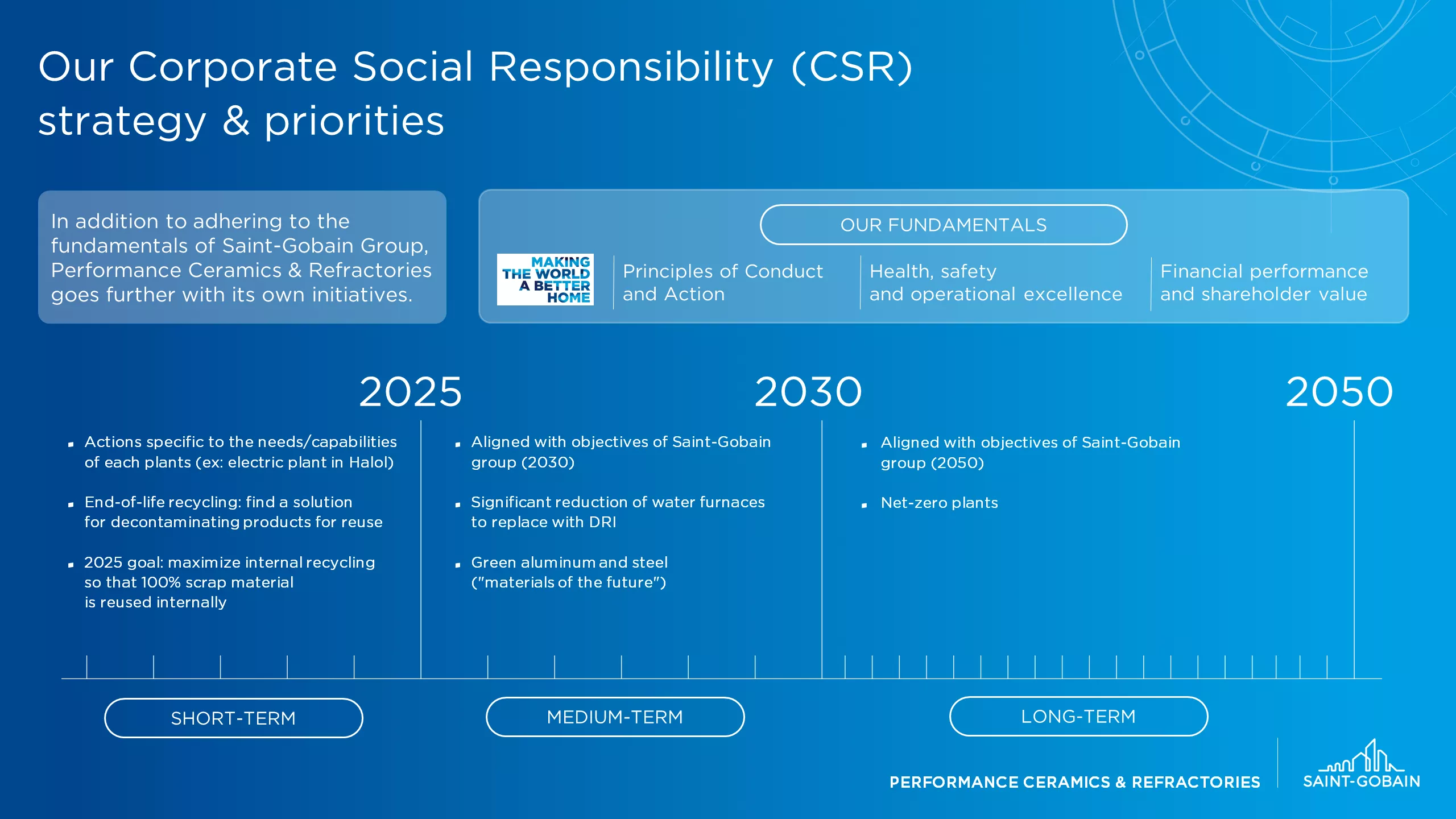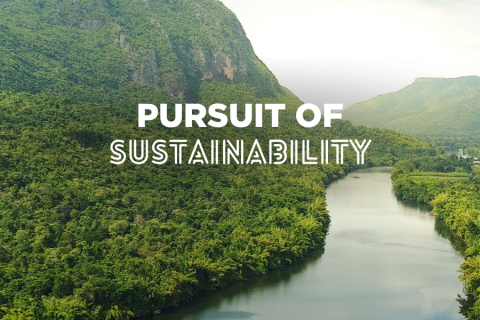Sustainability at the heart of our business strategy
Saint-Gobain Performance Ceramics and Refractories plays an integral role within the Saint-Gobain Group. Our teams around the world share an ambitious and meaningful purpose: Making the World a Better Home. A purpose that not only inspires but calls for action.
As well as being a member of the United Nation’s Global Compact since 2003, Saint-Gobain also encourages partners and suppliers to commit to the Global Compact’s ten principles. The Group also pays particular attention to the United Nations Sustainable Development Goals (SDGs). These commitments enable Saint-Gobain to better evaluate its impact and work towards a fairer, more sustainable world.
Since 2019, Saint-Gobain has supported the UN’s Global Compact’s Business Ambition for 1.5°C. The Group has committed itself to achieving net-zero emissions by 2050 in line with the goal of limiting the rise of global temperatures to 1.5°C. This ambition is part of the Group’s strategy to limit its environmental impact and contribute to decarbonising its markets.
Driving Decarbonization with Customized Ceramics

Side by side with our customers, we develop pioneering ceramic and refractory solutions in line with a sustainable future. Our collaboration is constant as we focus our efforts on supporting their decarbonization journeys. We deliver enhanced performance while minimizing our ecological impact.
Our passion for R&D and innovation enables us to continuously explore and invent unique solutions to accelerate our global progress in carbon-reducing initiatives, across our entire value chain.
This is how we shape better ways to pursue our mission, contributing, along with all our stakeholders, to inspire a change industry-wide, today and tomorrow.
Our Path to 2050: Step by Step Towards a More Sustainable Future
Sustainability is a key strategic priority for us. We strive to generate long-term benefits for our corporation, associates and stakeholders. Learn more about our commitment in our Corporate Social Responsibility (CSR) document where our commitment to a sustainable future takes shape through an ambitious roadmap to 2050.

Our Strategic Framework in Four Pillars
To address today’s environmental and societal challenges, we have built a sustainable development strategy centered around four key areas. This approach allows us to innovate, reduce our impact, strengthen partnerships, and support our teams within an ethical and positive framework. By exploring each pillar, you’ll see how we embed these values to shape a more responsible future.




